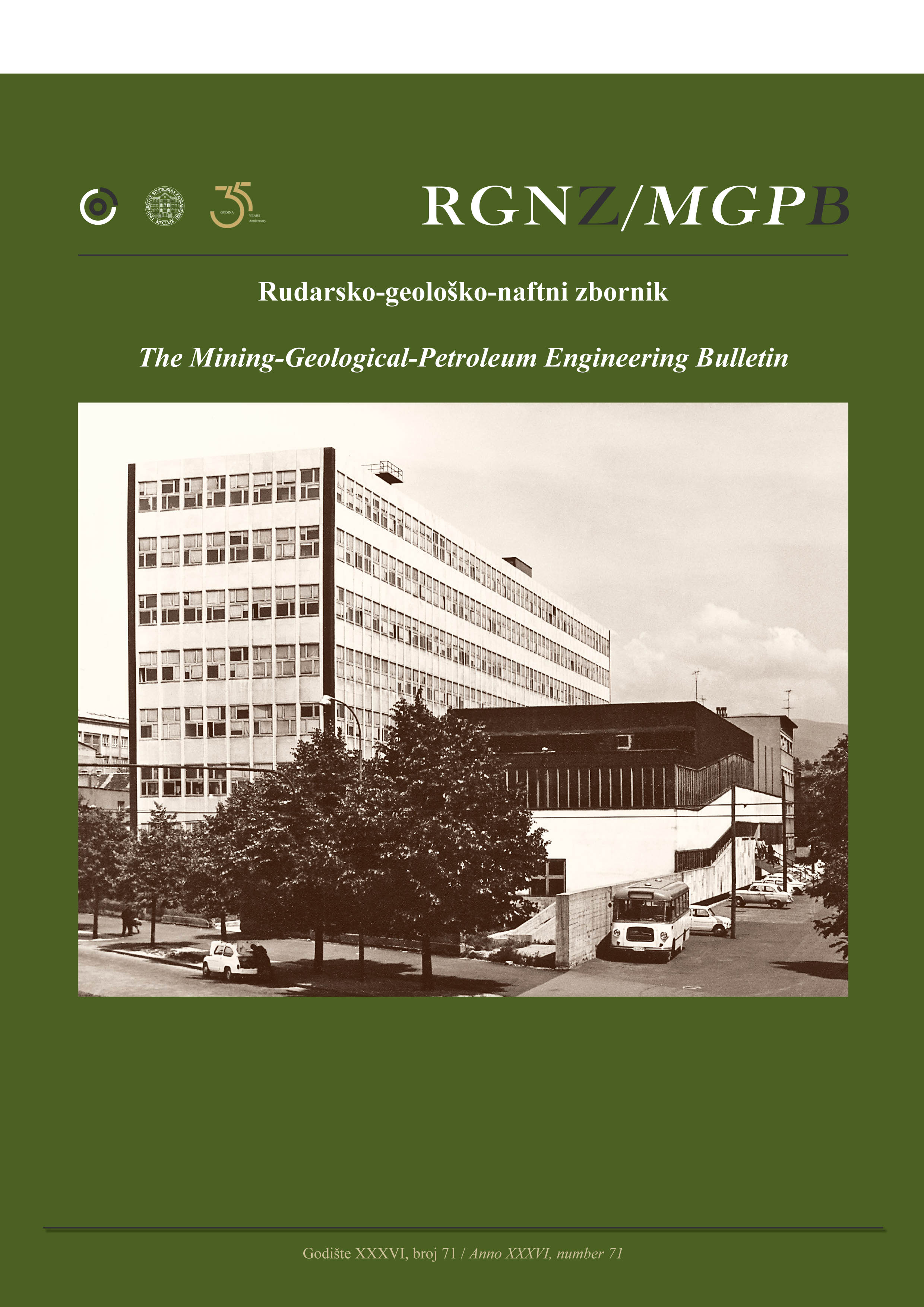Prediction of blast-induced flyrock by using neural-imperialist competitive method (Case Study: Sungun Copper Mine)
DOI:
https://doi.org/10.17794/rgn.2024.5.8Keywords:
fly rock length, blast, artificial neural network, imperialist competitive algorithm, sungun copper mineAbstract
This research focuses on conducting studies that predict the distance of blast-induced flyrock, which is an undesirable environmental phenomenon in open-pit mines. While there are experimental methods available for predicting blast-induced flyrock, the complex process of assessing the distance of flyrock has reduced the efficiency of these approaches. This study employs artificial intelligence methods and statistical techniques to forecast the flyrock distance in the Sungun copper mine. Thus, an Artificial Neural Network (ANN-MLP) and a new hybrid model of Artificial Neural Network (ANN) optimized by the Imperialist Competitive Algorithm (ICA), known as (ICA-ANN), are used to predict the flyrock distance, considering crucial parameters such as the number of holes, hole spacing, burden, total charge, specific drilling, charge per hole and specific charge. The results showed that the Artificial Neural Network, with RMSE, MAE, and R2 error values of 9.31 m, 7.10 m, and 0.81, respectively, was able to predict the flyrock distance well compared to the measured data in the test phase. However, the implementation of the imperialist competitive algorithm optimizer in the neural network enhanced the prediction of the flyrock distance, yielding RMSE, MAE, and R2 values of 5.66 m, 4.60 m, and 0.89, respectively. Finally, by performing sensitivity analysis on the input parameters of the flyrock distance, it was determined that the amount of explosive consumption and the number of holes have the greatest impact on the blast-induced flyrock distance.
Downloads
Published
How to Cite
Issue
Section
License
Copyright (c) 2024 Jalil Hanifehnia, Akbar Esmaeilzadeh, Reza Mikaeil, Solat Atalou

This work is licensed under a Creative Commons Attribution 4.0 International License.
Creative Commons-BY
Authors who publish with this journal agree to the following terms:
In agreeing this form, you certify that:
- You read the ethical codex of the RGN zbornik available at journal web.
- You submitted work is your original work, and has not previously been published and does not include any form of plagiarism.
- You own copyright in the submitted work, and are therefore permitted to assign the licence to publish to RGN zbornik.
- Your submitted work contains no violation of any existing copyright or other third party right or any material of an obscene, libellous or otherwise unlawful nature.
- You have obtained permission for and acknowledged the source of any illustrations, diagrams or other material included in the work of which you are not the copyright owner.
- You have taken due care to ensure the accuracy of the work, and that, to the best of your knowledge, there are no false statements made within it.
- All co-authors of this submitted work are aware of, and in agreement with, the terms of this licence and that the submitted manuscript has been approved by these authors.
Publication licence
You retain copyright in your submitted work, according to journal license policy (CC-BY). By signing this form you agree that RGN zbornik may publish it under the publication licence. In summary the licence allows the following:
Anyone is free:
- To copy, distribute, display, and perform the work.
- To make derivative works.
Under the following conditions:
- The original author must always be given credit.
- The work may not be used for commercial purposes.
- If the work is altered, transformed, or built upon, the resulting work may only be distributed under a licence identical to this one.
Exceptions to the licence
In addition to publishing the work printed under the above licence, RGN zbornik will also enable the work to be visible online.
The journal editorial can change the licence rules anytime but it cannot retroactively restrict author(s) rights.


